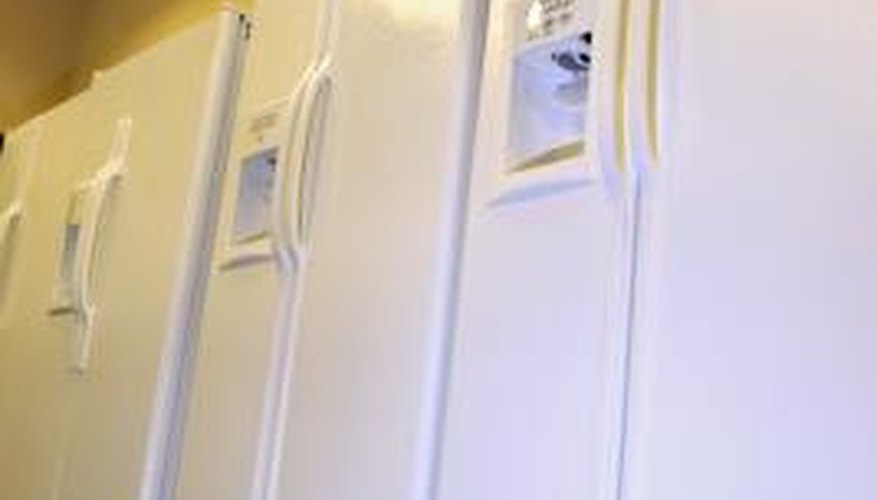Through-the-door refrigerator ice and water dispensers provide convenient chilled water and ice cubes for beverages, but they can cause problems. Water dispensers provide a ready habitat for mould and other fungi. While usually not harmful to your health, these microorganisms are unattractive and can affect water quality. They can be also difficult to remove from a water dispenser.
Causes
Fungal spores are present in the outside air and enter homes through windows and doors, according to the Albemarle County Service Authority (ACSA). These spores land on any hospitable surface and multiply readily. Mold and mildew grow best on constantly damp surfaces, especially in an enclosed space such as the refrigerator water dispenser. These fungi prefer an environment with limited airflow and little exposure to direct light.
- Fungal spores are present in the outside air and enter homes through windows and doors, according to the Albemarle County Service Authority (ACSA).
- These fungi prefer an environment with limited airflow and little exposure to direct light.
Problems
Mold can be invisible at first, but eventually produces spores, tiny black particles that combine with water to produce a slimy residue inside the water dispenser. If this slime dries out, it can flake apart, leaving dark-coloured particles in the water. Mold can also produce a musty or mildewy taste, rendering water and ice from the refrigerator less palatable.
Prevention/Solution
To get rid of mould in a water dispenser, flush the entire area with chlorinated water. Remove the dispenser cover and thoroughly clean the inside of the dispenser with a mild detergent, followed by a dilute chlorine bleach solution. Flush the area thoroughly with clean water afterward to remove any chlorine residue that might contaminate the water. Remove the water filter and flush the refrigerator's water tubing with chlorinated water to kill any microorganisms inside. Perform this cleaning process every few months to reduce the risk of a new mould problem. If the problem persists, consider changing plastic water supply lines to copper, which discourages mould growth.
- To get rid of mould in a water dispenser, flush the entire area with chlorinated water.
- Remove the water filter and flush the refrigerator's water tubing with chlorinated water to kill any microorganisms inside.
Considerations
While chlorinated public water kills mould spores on contact, it isn't always effective at keeping these microorganisms out of a refrigerator water dispenser. Chlorine disperses from water on contact with air. Mold will grow on any wet surface where the water has been undisturbed long enough to lose its antifungal properties, according to the ACSA.
